This site says
Loggers may be assigned levels. Levels are instances of the log4net.Core.Level class. The following levels are defined in order of increasing priority:
- ALL
- DEBUG
- INFO
- WARN
- ERROR
- FATAL
- OFF
DEBUG seems to have lowest priority and ERROR is higher.
Question
- If I set Min and Max example DEBUG and ERROR it prints everthing DEBUG, INFO, WARN and ERROR. Without use of min and max filter. If I specify ERROR (Logging level = ERROR) Will it include DEBUG, INFO & WARN
<filter type="log4net.Filter.LevelRangeFilter">
<param name="LevelMin" value="ERROR"/>
<param name="LevelMax" value="ERROR"/>
</filter>
Instead of min and max filter. Is it possible to configure a level and include all other levels below it for logging.
Example - Set level as Error it will include DEBUG, INFO, WARN and ERROR. Is this possible with log4net?
Posting log4net config based on one of comments:
<?xml version="1.0" encoding="utf-8" ?>
<configuration>
<configSections>
<section name="log4net" type="log4net.Config.Log4NetConfigurationSectionHandler,log4net" />
</configSections >
<log4net debug="true">
<appender name="LogFileAppender" type="log4net.Appender.FileAppender">
<layout type="log4net.Layout.XMLLayout" /> -->
<param name="File" value="TestLog.log" />
<param name="AppendToFile" value="false" />
<layout type="log4net.Layout.PatternLayout">
<header type="log4net.Util.PatternString" value="[START LOG] %newline" />
<footer type="log4net.Util.PatternString" value="[END LOG] %newline" />
<conversionPattern value="%d [%t] %-5p - %m%n" />
</layout>
<filter type="log4net.Filter.LevelRangeFilter">
<param name="LevelMin" value="DEBUG"/>
<param name="LevelMax" value="ERROR"/>
</filter>
</appender>
<root>
<level value="ALL" />
<appender-ref ref="LogFileAppender" />
</root>
<logger name="log4NetExample">
<!-- <appender-ref ref="B" /> -->
<level value="ALL" />
<appender-ref ref="LogFileAppender" />
</logger>
</log4net>
